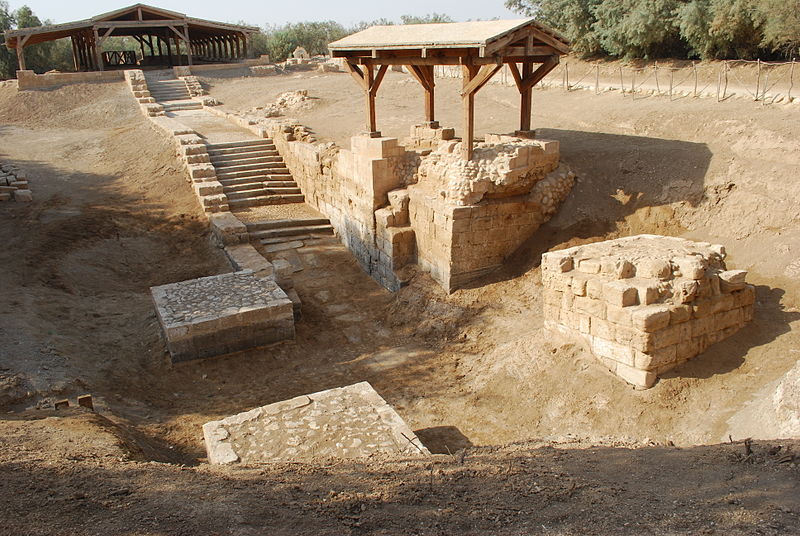7 Dec. Why did John baptise Jesus at Bethany beyond the Jordan?
"At that time Jesus came from Galilee to the Jordan River and wanted John to baptise him. But John tried to stop him, saying, 'Why do you come to me to be baptised? I need to be baptised by you!' Jesus answered, 'Let it be this way for now. We should do all things that are God's will.' So John agreed to baptise Jesus."
"As soon as Jesus was baptised, he came up out of the water. Then heaven opened, and he saw God's Spirit coming down on him like a dove. And a voice from heaven said, 'This is my Son, whom I love, and I am very pleased with him.'"
(Matthew 3:13-17)
"This all happened at Bethany on the other side of the River Jordan, where John was baptising people."
"The next day John saw Jesus coming towards him, John said, 'Look, the Lamb of God, who takes away the sin of the world! This is the one I was talking about when I said, 'A man will come after me, but he is greater than I am, because he was living before me.' Even I did not know who he was, although I came baptising with water so that the people of Israel would know who he is."
"Then John said, 'I saw the Spirit come down from heaven in the form of a dove and rest on him... I have seen this happen, and I tell you the truth: this man is the Son of God.'"
(John 1:28-34)

Today we have two short passages from different gospels which both confirm the role of John the Baptist in the Christmas story: John sees Jesus coming towards him and testifies that Jesus is the one for whom he is preparing the way: “Look, the Lamb of God, who takes away the sin of the world!” (John 1:29) (see Isaiah 53:7, Exodus 12:3-11 & 21-23 and 1 Corinthians 5:7).
But why did John baptise Jesus at Bethany beyond the Jordan? This is a small detail that is often missed by readers, but actually had huge significance to Jews and Jewish Christians.
John the Baptist could have picked any point along the River Jordan to baptise the crowds. But his chosen spot – on a winding stretch of the river, 5 miles / 8 km to the east of Jericho – was full of religious and historical significance to the Jews who flocked to hear him.
When John decided to baptise at the place now known as Bethany beyond the Jordan (to distinguish it from another Bethany, near Jerusalem), the site was already well known by those who read the Jewish scriptures. It was regarded as the spot where the Jewish prophet Elijah had crossed the River Jordan shortly before he was taken up to heaven (see 2 Kings 2:8).
It was widely believed in John’s day that the prophet Elijah would return again to herald the coming of the Messiah or Christ – God’s anointed one (see Malachi 4:5). When John's birth was announced, the angel Gabriel said that John would "go before the Lord in spirit and power like Elijah... to make a people ready for the coming of the Lord." (Luke 1:17) So it was a highly symbolic act for John to baptise at the very spot where Elijah was expected to return, and to point his followers to the coming of Jesus, whom John declared to be “the Lamb of God, who takes away the sin of the world!” (John 1:29).
Visitors to Bethany beyond the Jordan, in modern-day Jordan, can view the extensive archaeological remains that have been excavated in the vicinity of Elijah’s Hill (Tell Mar Elias) and Bethany (Tell al-Kharrar) since 1996. These include a 3rd century Roman building with a beautiful mosaic floor (which may have been used by early Christians) and a 5th century Byzantine monastery with numerous chapels and pools for baptising believers.
The photo (by Jean Housen) shows the remains of an ancient baptismal site at Bethany beyond the Jordan.
You can read more about Bethany beyond the Jordan @ https://www.thebiblejourney.org/the-bible-journey/2-john-the-baptists-journeys-b/john-begins-baptising/
